Your bathroom is more than just a functional space; it’s a canvas waiting for your creativity to breathe new life into it. Bathroom tile renovation is a transformative process that breathes new life into your space without the hassle of full-scale replacements. Whether you’re aiming to revamp the aesthetics or resolve wear and tear, there are numerous creative approaches to consider.
The choices for bathroom tile renovation are as diverse as they are exciting, offering a spectrum of ideas to revitalize your space. Let’s explore some innovative bathroom tile renovation ideas, cost-effective solutions, and essential tips to spruce up your bathroom.
Quick Fixes and Repairs
Updating your bathroom tiles can bring new life to your space. You don’t have to undertake a full renovation; simple fixes and repairs can make a big difference in appearance and cost. Quick solutions are both budget-friendly and efficient.
1- Repairing Chips and Damaged Tiles
Chipped or cracked tiles can detract from the overall aesthetic appeal of your bathroom. Repairing these imperfections is a straightforward way to restore the tile’s appearance and prevent further damage. Utilizing tile repair kits or epoxy putty can effectively mend small chips, while for larger damages, replacing individual tiles might be necessary.
Tile Repair Techniques
- Using Tile Repair Kits: These kits typically include materials like epoxy or filler specifically designed for tile repair. Following manufacturer instructions, carefully apply the product to fill in chips or cracks, ensuring a seamless finish.
- Replacing Individual Tiles: When chips or damages are extensive, replacing individual tiles might be the best solution. This process involves removing the damaged tile, preparing the area, and installing a new tile to match the existing pattern.
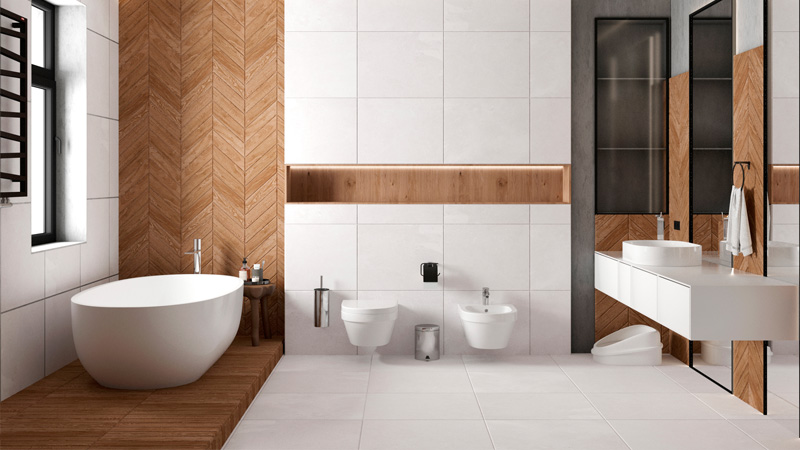
2- Grout Revival Techniques
Reviving worn-out grout can remarkably enhance the overall appearance of your bathroom. Explore grout stain removal techniques or opt for grout pens to redefine lines, injecting new vitality into your tiles.
Grout Stain Removal Techniques
Over time, grout lines can accumulate stains and discoloration, diminishing the appearance of bathroom tiles. Several techniques can effectively remove grout stains, restoring the grout lines to their original brightness.
Grout Cleaning Methods
- Grout Cleaners: Specialized grout cleaners designed to tackle stains and mildew can be used. Apply the cleaner according to instructions, scrubbing gently with a brush to lift stains.
- Natural Remedies: Solutions like baking soda and vinegar or a paste of hydrogen peroxide and baking soda can act as mild yet effective cleaners for grout stains.
Redefining Grouting for a Fresh Look
Revamping grout lines can instantly rejuvenate the appearance of bathroom tiles. Redefining grout involves applying a grout pen or fresh grout to existing lines, providing a clean and uniform finish.
- Using Grout Pens: Grout pens offer a quick and simple solution to redefine grout lines. Choose a pen that matches the existing grout color, carefully trace over the lines, and wipe away any excess for a polished look.
- Fresh Grout Application: In cases where grout lines are severely discolored or damaged, removing old grout and reapplying fresh grout can provide a complete transformation. This process involves the meticulous removal of old grout and applying new grout evenly.
3- Painting Bathroom Tiles
Refresh your bathroom tiles affordably and transform their look through painting. Adequate preparation is crucial for a lasting and appealing finish. With the right preparation and painting process, your tiles can provide a renewed and versatile canvas for your creativity.
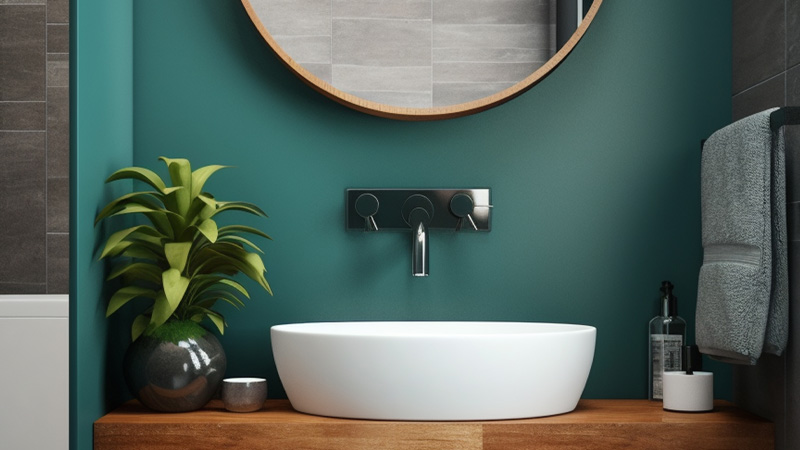
Effective preparation is essential for achieving professional-looking results when painting bathroom tiles. Following a systematic approach plays a pivotal role in ensuring success. To help you achieve the desired outcome, here’s a step-by-step guide:
- Cleaning Surfaces: Begin by thoroughly cleaning the tiles to remove any dirt, grease, or soap buildup. Use a tile cleaner or a solution of water and vinegar to ensure the tiles are free from contaminants. Pay special attention to grout lines and corners where mold or residue might accumulate.
- Repairing Damages: Address any chips, cracks, or damaged areas on the tiles. Fill in chips with epoxy filler and sand them smooth once dry. This step ensures a smooth and even surface for the paint application.
- Priming the Tiles: Use a primer specifically designed for tiles. Apply it evenly across the surface, allowing it to dry completely as per the manufacturer’s instructions. The primer enhances the adhesion and durability of the paint.
- Choosing the Right Paint: Opt for a high-quality, specialized tile paint that suits your color preferences and bathroom decor. Ensure the paint is formulated for high-moisture environments to withstand the conditions of a bathroom.
- Applying the Paint: Stir the paint thoroughly before application to ensure uniform consistency. Begin by using a synthetic brush to paint along grout lines and edges, ensuring precise coverage. Apply the paint in thin, even coats across the tiles, avoiding drips or pooling.
- Multiple Coats (if necessary): Depending on the color and coverage desired, multiple coats may be needed. Allow each coat to dry completely before applying the next one. Follow the manufacturer’s guidelines for drying times between coats.
- Finishing Touches: Once the final coat has dried, consider using a sealant designed for painted tiles to enhance durability and protect the painted surface from moisture and wear.
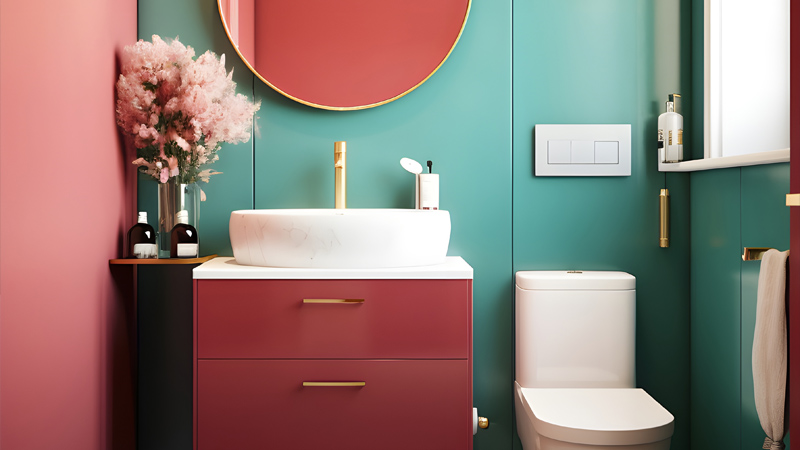
Maintenance and Aftercare Tips
Maintaining the painted tiles ensures their longevity and continued appeal:
- Gentle Cleaning: Clean painted tiles regularly using mild, non-abrasive cleaners to preserve the paint finish. Avoid harsh chemicals or abrasive scrubbing that could damage the painted surface.
- Preventing Scratches: Use caution when placing or moving objects on painted tiles to prevent scratches or chips. Consider using felt pads under decorative items to avoid direct contact with the painted surface.
- Periodic Touch-Ups: Over time, painted tiles may require touch-ups. Keep a small amount of leftover paint for quick fixes, ensuring consistency in color and finish.
By meticulously preparing, executing the painting process, and maintaining the painted tiles, you can achieve a refreshed look for your bathroom tiles at a fraction of the cost of replacement.
Alternative Design Elements
When considering bathroom tile renovation, exploring alternative design elements can offer creative and cost-effective solutions to refresh the space without the hassle of full replacement. These elements add flair, character, and functionality to your bathroom, providing a spectrum of choices to suit diverse tastes and preferences. Among these alternatives, tile stickers, bathroom wall panels, and the use of colored or patterned tiles stand out as versatile options.
1- Tile Stickers: Installation and Durability
Tile stickers are a popular way to update bathroom tiles quickly and easily. They come in various designs, colors, and sizes and are a cost-effective alternative to traditional tiles. With diverse patterns and designs, they can instantly revamp your bathroom’s ambiance without breaking the bank.
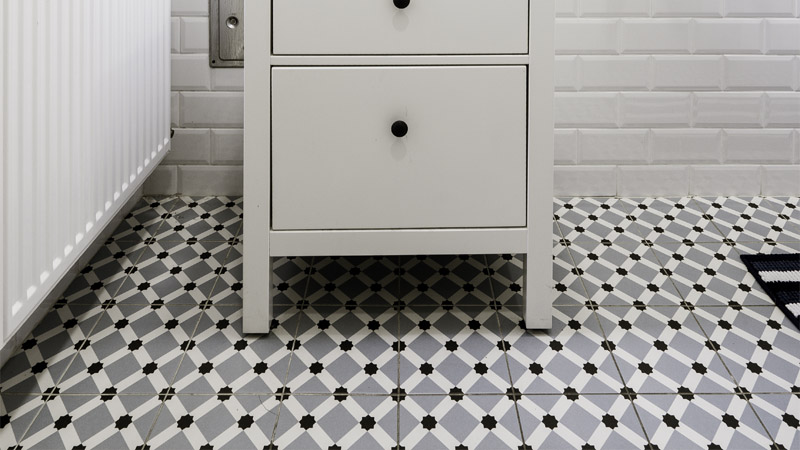
Installation Process
Installing tile stickers involves cleaning the surface thoroughly, ensuring it’s free from dust and grime. These stickers adhere easily to tiles and can be trimmed or customized to fit specific areas. The installation process is relatively straightforward, making it a DIY-friendly option for bathroom renovations.
Durability and Maintenance
Quality tile stickers offer good durability, resistance to moisture, and regular cleaning. They’re an excellent temporary solution or a quick fix to transform the look of outdated tiles. Regular cleaning with non-abrasive methods helps maintain their appearance and longevity.
2- Bathroom Wall Panels: Definition and Benefits
Bathroom wall panels are a versatile alternative to traditional tiles that cover large sections of walls, reducing grout lines for a sleek, modern look. With options like PVC, acrylic, or laminate, they offer an opportunity to add texture, color, and style with an easy installation process and a variety of design choices. Upgrade your bathroom’s aesthetic with modern wall panels.
Benefits of Wall Panels
- Low Maintenance: Wall panels are easy to clean and require minimal maintenance.
- Waterproof: They offer excellent water resistance, reducing the risk of moisture-related issues.
- Design Variety: Available in diverse colors, patterns, and textures, allowing for customized designs.
- Installation Ease: Panels often come in interlocking systems, facilitating straightforward installation.
Installation and Considerations
Installation typically involves affixing the panels directly onto the wall surface, and they can be cut to fit around fixtures or corners. Professional installation may be preferred for precise fitting and a seamless finish.
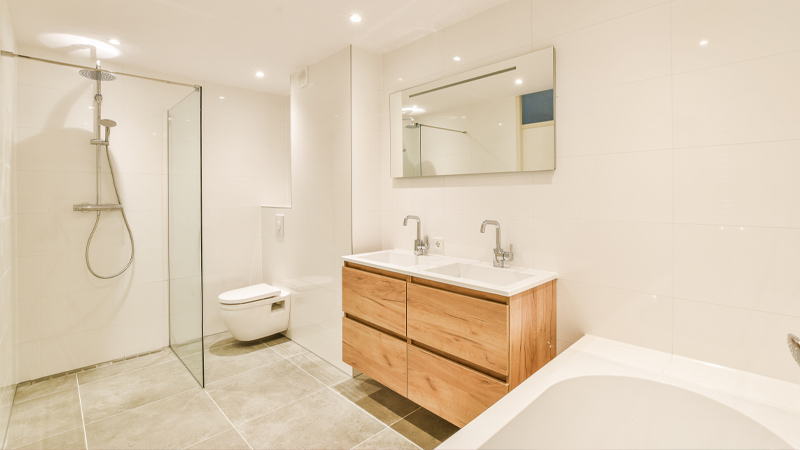
3- Exploring Colored or Patterned Tiles
Incorporating colored or patterned tiles is a classic yet effective way to update bathroom aesthetics. Vibrant colors or intricate patterns can instantly transform the ambiance, adding personality and style to the space.
- Design Cohesion: Select tiles that complement the overall theme and style of the bathroom.
- Visual Impact: Use patterns or colors strategically to highlight focal areas or create visual interest.
- Tile Selection: Choose tiles that align with the desired maintenance level and durability.
- Installation and Maintenance: Installation of colored or patterned tiles follows traditional tiling methods, requiring precision and attention to detail. Regular cleaning and maintenance ensure the tiles retain their vibrancy and appeal over time.
Advanced Renovation Techniques
Renovating bathroom tiles frequently entails exploring different refinishing methods and alternative techniques to update them, along with considering the associated costs and considerations. The possibilities for these approaches are diverse and varied.
1- Refinishing Tiles: Restoring Brilliance
Refinishing tiles involves techniques like sanding, re-sealing, or polishing, breathing new life into worn surfaces. While more involved, this method can deliver remarkable results.
Can Bathroom Tiles Be Refinished?
Bathroom tile renovation often involves considering whether existing tiles can be refinished instead of replaced entirely. Refinishing tiles can be a viable option, particularly if the tiles are in good condition but need a visual refresh. However, the feasibility of this approach depends on the type of tiles, their condition, and the desired outcome.
- Cost Considerations: Refinishing bathroom tiles can be a cost-effective option compared to complete replacement. It typically involves cleaning, resealing, or resurfacing the tiles to restore their appearance. The cost varies based on the area to be refinished and the chosen method.
- Effectiveness: Refinishing is more suitable for certain types of tiles, such as ceramic or porcelain. However, natural stone tiles might require more specialized care and expertise during the refinishing process.
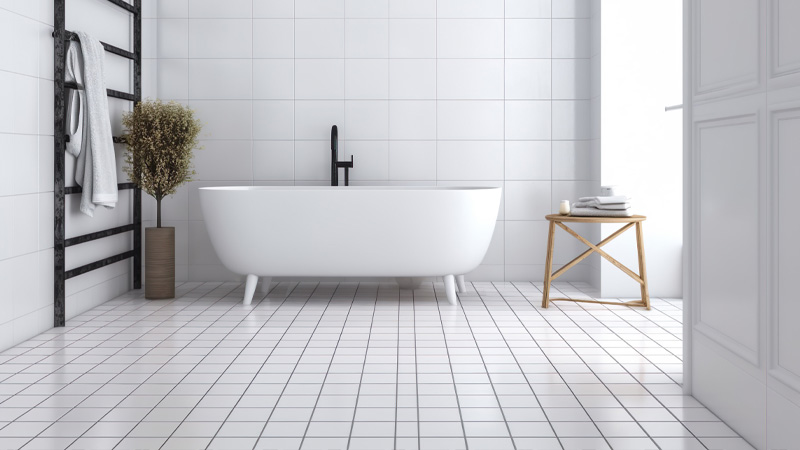
2- Tiling Over Existing Tiles: Weighing Pros and Cons
Tiling over existing tiles can be a tempting choice for those seeking a faster renovation process, as it can potentially save both time and money. However, it is important to carefully consider the drawbacks that come with this method, including potential adhesion problems and increased overall weight.
| Pros | Cons |
| Relatively affordable | Increases height and weight of surface |
| Less time-consuming | Potential issues with door clearances and fixtures |
| Eliminates need for tile removal | Not all adhesives suitable for bonding tiles to tiles |
| Reduces labor costs and inconvenience | May affect longevity and stability of new installation |
| Quick solution for updating bathroom |
Exploring Different Refinishing Methods
There are several approaches to refinishing bathroom tiles, each with its advantages and considerations.
- Sanding and Re-sealing: This method involves sanding down the surface of the tiles to remove imperfections and applying a new sealant or finish. It can breathe new life into worn-out tiles but requires precision and expertise.
- Acid Washing: Acid washing involves using specialized chemicals to clean and rejuvenate tile surfaces. However, it requires caution and protective gear due to the nature of the chemicals involved.
- Polishing with Rotary Buffer: This method involves using a rotary buffer with polishing compounds to restore the shine and smoothness of tiles. It’s effective for certain types of tiles but might not be suitable for all materials.
- Considerations: The choice of refinishing method depends on factors such as tile material, condition, and desired outcome. Consulting with professionals or researching thoroughly before undertaking any refinishing method is advisable to ensure the best results.
Final Touches and Considerations
In the realm of bathroom tile renovation, the final touches and considerations hold substantial importance in achieving a cohesive and aesthetically pleasing outcome. These aspects, often the finishing strokes, can elevate the overall ambiance and functionality of your bathroom space.
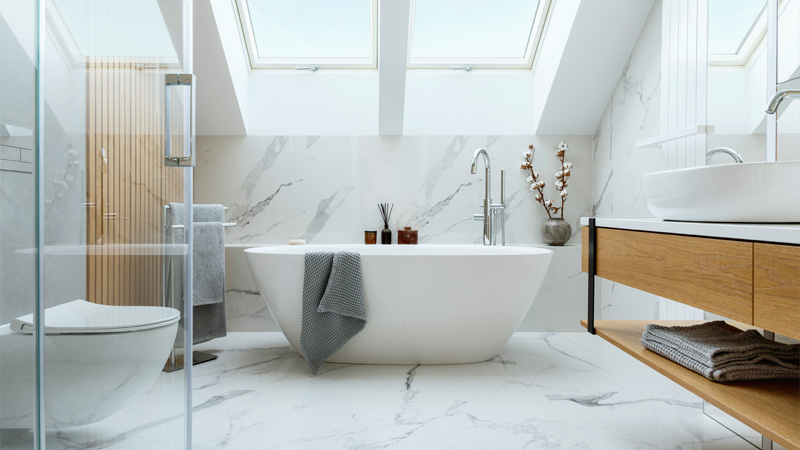
3- Matching Wall and Floor Tiles for Cohesion
Matching wall and floor tiles serve as a cornerstone for a harmonized bathroom design. Achieving cohesion between these surfaces creates a sense of continuity and spaciousness within the room. The choice of tiles that complement each other in color, texture, or pattern can drastically transform the visual appeal of the space. Consider:
- Color Palette Harmony: Ensuring the colors of your wall and floor tiles complement each other is pivotal. A unified color scheme can create an illusion of expansiveness and consistency in style.
- Texture and Finish Consistency: Consistency in texture and finish between wall and floor tiles can contribute to a seamless and coordinated look. Smooth transitions between these surfaces enhance the overall visual impact.
- Pattern Complementarity: If opting for patterned tiles, aligning the patterns or choosing complementary designs can infuse a sense of unity while avoiding visual clashes.
4- Changing Tile Laying Patterns
Altering the tile laying pattern presents an innovative way to refresh your bathroom without replacing the tiles entirely. This approach offers a quick transformation, providing a unique visual impact. Consider:
- Herringbone or Chevron Patterns: These classic patterns bring a touch of elegance and visual interest to the space. The interlocking designs create a dynamic and eye-catching effect.
- Diagonal Layouts: A diagonal layout can elongate the room visually, adding a sense of depth and dimension to the bathroom.
- Mixed Tile Sizes: Experimenting with different tile sizes and shapes can lend an eclectic and modern flair to the space. Combining large and small tiles or utilizing mosaic patterns can create a captivating visual mosaic.
Bathroom Tile Renovation Costs
Bathroom tile renovation costs vary based on the chosen method and the scale of the project. While some options offer budget-friendly solutions, others might require more investment but yield lasting results.
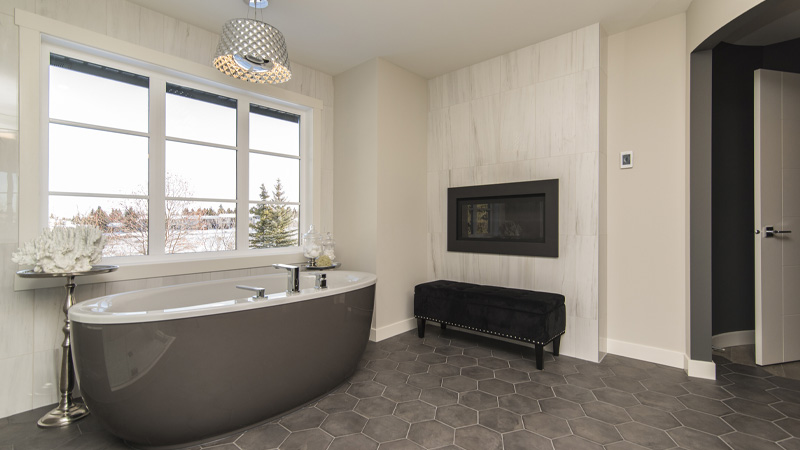
To successfully renovate your bathroom tiles, it’s important to understand your goals, explore options, and choose an approach that aligns with your vision and budget. This can involve quick fixes or more extensive transformations, with the ultimate goal of creating a refreshed and inviting space. Bathroom tile renovation is a pivotal opportunity for reinvention in home improvement, offering a range of cost-effective methods and transformative designs.
Through this guide, you can unlock the possibilities and elevate your bathroom’s aesthetic and functionality. However, don’t forget that it’s not just about the tiles – it’s about crafting a space that reflects your style and meets your needs. With creativity, careful consideration of bathroom tile renovation costs, and an array of ideas at your disposal, your renovated bathroom can be a testament to innovation and personal flair. So embrace the transformation and revel in the newfound charm of your revitalized bathroom sanctuary.

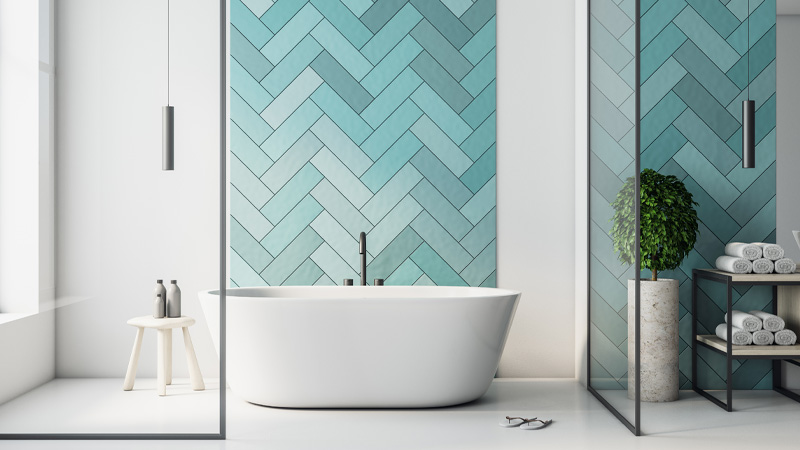
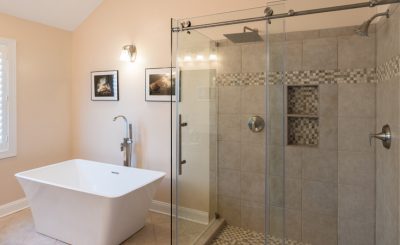
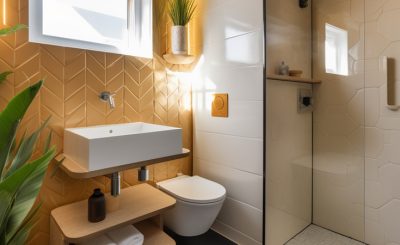
Roger Fournier
I have a few chipped tiles in my bathroom. Are there any DIY techniques you’d recommend for repairing them, or is it best to call in a professional?
Shamaim
Hi there! If you’re comfortable with some light DIY work, you can attempt to repair the chipped tiles yourself. There are various DIY techniques available for repairing chipped tiles, including filler kits and epoxy. However, if you’re unsure or it’s a complex repair, it’s best to call us to ensure a high-quality result. Thanks for reaching out!
Barbara Jackson
I’m thinking of installing bathroom wall panels instead of traditional tiles. Can anyone share their experience with this alternative? How does it compare in terms of maintenance and durability?
Shamaim
Hi there! Bathroom wall panels can indeed be a practical alternative to traditional tiles. Those who have installed them often find that they are relatively low-maintenance and durable. However, as with any material, proper installation and care are essential for longevity. Thanks for reaching out!
Martin Wood
Thank you for sharing these tips! I’ve been contemplating a bathroom tile renovation, and your article has provided me with a lot of valuable insights to consider
Shamaim
Hi there! We’re thrilled that the article has provided you with valuable insights! If you have any further questions as you plan your project, feel free to reach out. Good luck with your renovation!
Nicole Hall
Has anyone tried painting their bathroom tiles? I’m considering it for a quick refresh, but I’m not sure how well it holds up in the long run. Any experiences to share?
Shamaim
Hi there! Painting bathroom tiles can be a cost-effective way to refresh the look of your bathroom. While it can provide a quick update, it’s important to use the right type of paint and ensure proper preparation for long-term durability. We recommend that you contact us to learn more!
Christine Green
I’m curious about the renovation costs. A rough estimate for a bathroom tile renovation, especially if I want to explore some of the advanced techniques mentioned in this guide.
Shamaim
Hi there! Renovation costs can vary widely based on factors such as the size of the bathroom, materials used, and the extent of the renovations. It’s recommended to obtain quotes from us to get a more accurate estimate tailored to your specific project. Thanks for reaching out!
Doug Roberts
Thank you for sharing these articles
Shamaim
Hi there! We’re pleased to hear that you find our articles valuable! We’re always striving to provide helpful information for your home improvement projects. Thanks for reaching out!
Brenda Lapointe
I love the idea of exploring colored or patterned tiles for a unique look in my bathroom. I have to find suggestions on how to incorporate bold tile designs without overwhelming the space.
Shamaim
Hi there! Incorporating bold and colorful tiles can be a great way to add personality to your bathroom. When using bold designs, consider balancing them with neutral elements to avoid overwhelming the space. It’s all about finding the right balance and creating visual interest without overcrowding the room. Thanks for reaching out!
Elizabeth Bell
I’ve never heard of tile stickers before. How do they compare to traditional tiling in terms of installation and maintenance, and are there any design limitations to consider?
Shamaim
Hi there! Tile stickers are a creative and cost-effective alternative to traditional tiling. They can offer an easy installation process and are generally low-maintenance. However, it’s important to check for any limitations on where they can be applied and ensure that the surface is suitable for the stickers. Thanks for reaching out!
Terry Ouellet
Thank you for the grout revival tips. I’ve been struggling to keep my grout looking fresh, so these techniques are a lifesaver.
Shamaim
You’re welcome! We’re glad to hear that the article has been helpful. Thanks for reaching out!
Bob Patel
Matching wall and floor tiles for cohesion sounds like a great way to tie the bathroom design together. Any advice on choosing complementary patterns and textures?
Shamaim
Hi there! When choosing complementary patterns and textures for wall and floor tiles, consider creating visual interest through contrasting yet complementary designs. For example, pairing a bold pattern with a more subdued one can create a cohesive yet dynamic look for your bathroom. Thanks for reaching out!
Margaret Watson
I’m interested in tiling over my existing tiles to update the look of my bathroom
Shamaim
Hi there! Tiling over existing tiles can be a viable option for updating your bathroom. It’s important to weigh the pros and cons and ensure that the existing surface is suitable for the new tiles. Proper preparation is key to a successful outcome. Thanks for reaching out!